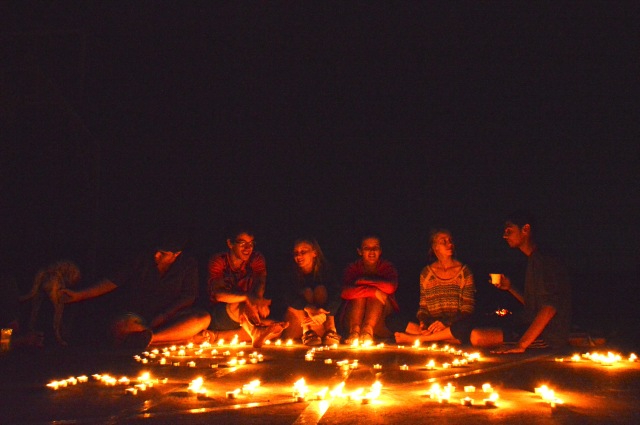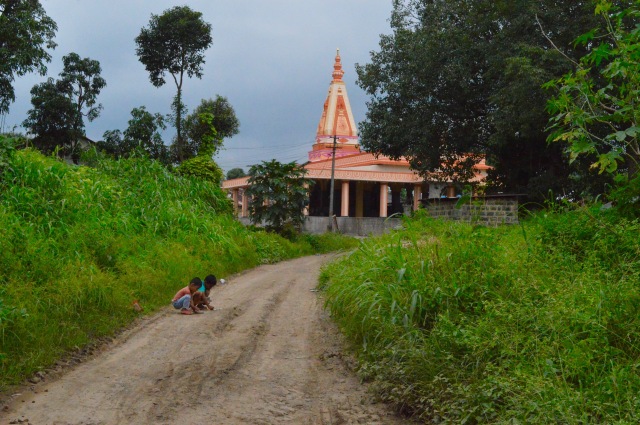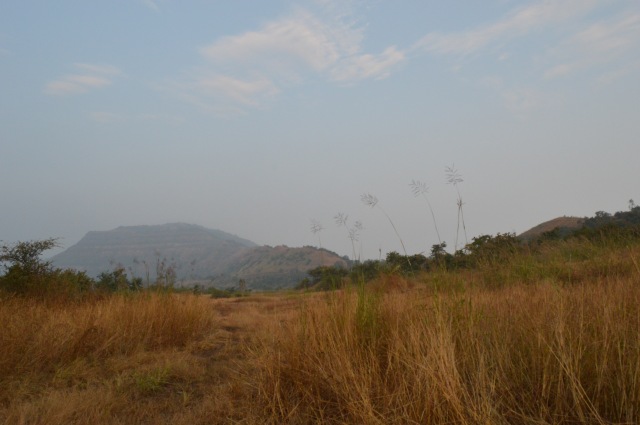On the opposite side of Mulshi valley is a field with rows upon rows of gleaming solar panels. Barbed wire fences surround the area, and the solar panels are lined up side by side to the water’s edge of Mulshi Lake; itself a product of a renewable energy project – the Mulshi Dam. I have taken notice of these green energy projects in the surrounding area, but on campus I often forget about the energy problems facing the greater community.Rural areas are the least priority when it comes to energy distribution and power cuts lasting several hours is a daily occurrence in the villages. On the hill, we have electricity 24 hours a day and when the energy from the government grid disconnects, the hum of a diesel generator immediately kicks in. The school mission statement suggests a commitment to sustainability and one of the most basic ways we can improve our efforts is through reducing our consumption of natural resources while trying to meet our needs using environmentally friendly means. We have an admirable vision when it comes to sustainability, but acquiring the resources to implement solutions on the ground is a much greater challenge.

An Earth Day event last year to symbolize our commitment to energy conservation.
Then, last year, we found out about Sheikh Zayed – the founder of the United Arab Emirates and also an environmental philanthropist. After his death, he established a fund, which provides grants totalling US$4 million annually. Each year, a grant of $100 000 is given to a high school on each continent – enough to make a real investment into green energy. My Brazilian friend Lucas and I knew the potential was great, and through the encouragement of teachers (or perhaps coercion is a better term), we decided to develop a proposal. With little prior knowledge on the technology we were truly starting from the beginning. After analyzing the feasibility of technologies such as hydro, wind, solar and biogas, we settled on two technologies to channel through two major components 1) on-campus renewable energy production and 2) community engagement with a local primary school.
- The on-campus green energy project would compose of a 50kW solar panel installation, which would provide about 13% of the schools electricity needs. Additionally, the school uses a significant amount of Liquid Petroleum Gasoline (LPG) for cooking in the cafeteria. An alternative way to produce cooking gas is through biogas generation. In this process, food waste is put into a large storage unit and as the organic matter breaks down, methane gas is produced and collected for use directly in the cafeteria. Additionally, the decomposed food waste creates a nutrient rich ‘slurry’ that can be used as fertilizer on the organic farm. Biogas generation is a perfect example of how environmental cycles can be worked with, instead of fought against, in developing energy solutions.
- The second part of the project is where students will play a major role. A local primary school will be fitted with solar panels and a smaller-scale biogas generator enabling the facility to become energy self-sufficient. More importantly, this component will allow students at MUWCI and the local school to learn about green energy though hands-on work with the technology. By participating in workshops with the energy company, students will gain the necessary knowledge and skills to support the installation and maintenance. The goal is not to solely provide useful infrastructure, but to create a heightened sense of responsibility to act and for youth to educate their peers on the importance, and potential of, green energy.

Nanegoan Village – home to the local primary school.
In October, we received the news that of 1,437 applicants from 97 countries, we are 1 of 14 finalists. Why do we think we deserve to win? In our educational platform we work to inspire action. Winning the prize will provide the resources for students to implement their learning through participating in a larger scale green energy project. Whether or not we do win, it has been a valuable learning process and I hope our research can be used as a framework for decisions the insitution makes in regards to sustainability in the future. While the global community has all eyes on Paris as leaders take imperative decisions at the COP 21 conference, we are trying to do our small part on the other side of the world.

For 9 months of the year, our geographical area receives 12 hours of sunlight a day making it an ideal location to produce electricity through solar power.
Hey Jayden, I’m really interested in applying for UWC next year and I have a ton of questions about the application process and about life at the colleges. I was wondering if you could answer a few for me? If you have an email that would be a lot easier than writing them here! Thanks so much, Emily
LikeLike
Hi Emily!
Absolutely. My e-mail address is jaydenr@muwci.net .
Please send me a message and I will do my best to answer your questions.
Talk soon 🙂
LikeLike